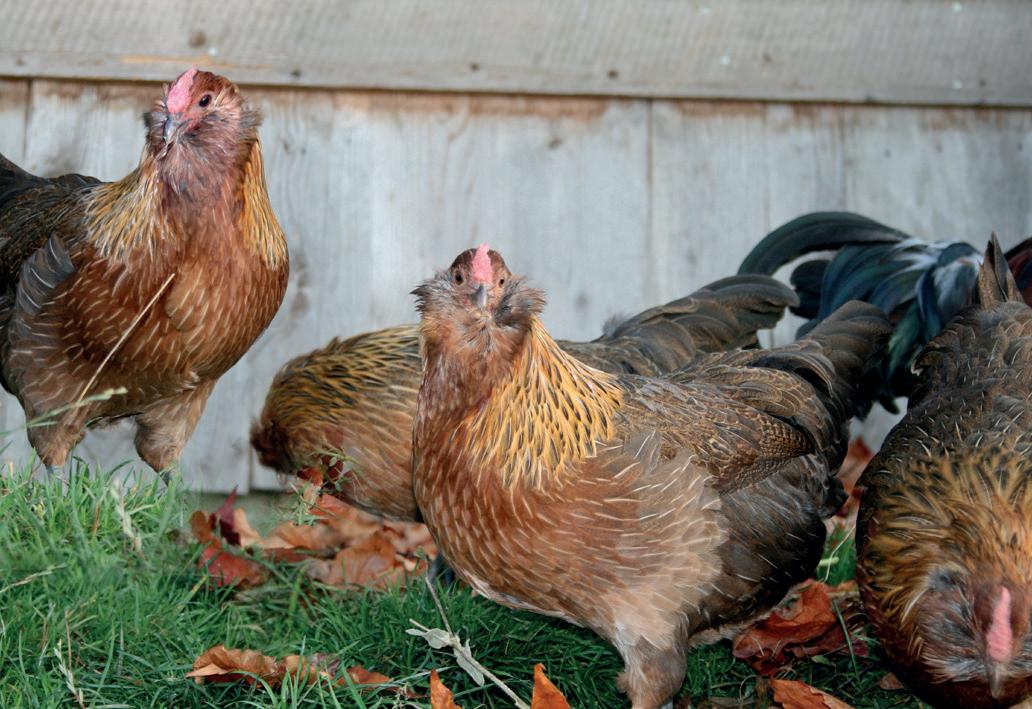
1 minute read
Appenzell Barthuhn
Appenzell Barthuhn proudly displaying its beard (Philippe Ammann / ProSpecieRara)
Origin and development
The Appenzell Barthuhn (“bearded hen”) originated in the Eastern Swiss Alps in the middle of the 19th century. The model for breeding was the (then already extinct) Italian Polverara hen. In order to breed such a cold-hardy and productive type of hen, Italian chickens were crossed with bearded and rose-combed breeds. The result was the Appenzell Barthuhn. In the post-war years, this breed shared the fate of many native breeds: as agriculture was modernised, they were neglected because their performance could not compete with that of hybrid hens. In 1985, as the partridge-coloured type of Appenzell Barthuhn had become very rare, the last remaining breeders initiated a conservation breeding programme.
Description
The Appenzell Barthuhn is a light, spirited hen with a proud carriage. Both cocks and hens have a luxuriant feathered beard, evident even in day-old chicks. The Barthuhn lays around 150 white-shelled eggs in the first year and may be productive for several years. The original colour variety was black; from this, the partridge-coloured and later the blue Barthuhn developed. In all varieties, the leg colour is blue to dark grey. As befits an Alpine dweller, the alert hens are cold-hardy and robust, and can readily be let outdoors throughout the year.

A group of Appenzell Barthuhn chickens, with their characteristic beards and frost-resistant rose combs, at pasture in the autumn (Philippe Ammann / ProSpecieRara)
Breeding objectives
h Health and hardiness h Longevity h Laying performance h Attractive markings
References
Züchterverein für ursprüngliches Nutzgeflügel (www.zun-schweiz.ch) Kleintiere Schweiz (www.kleintiere-schweiz.ch) ProSpecieRara (www.prospecierara.ch)










